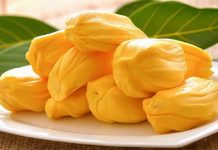Scientific name: Ananas comosus (L.) Merr.
Family: Bromeliaceae
Synonym: Ananas sativus (Lindl.) Schult. f., Bromelia comosa L.
Bengali/Vernacular name: Anarash.
Tribal name: Nedrebang (Marma), Naingdarci (Chak), Lal huther (Lushai), Safsa (Murang), Lathy (Pangkhoa), Nan-dara-sthei (Rakhaing).
English name: Ananas, Pineapple.
Description of the plant: A perennial herb, tufted, stem short, unbranched, thick and fleshy. Leaves linear-lanceolate, up to 1 m long by 4 cm wide with spiny margins, parallel-veined, acuminate, closely spaced in a rosette on the stem. Small purple or red flowers are each accompanied by a single red, yellowish or green, fleshy bract. Mature fruit up to 20 cm long, seedless, juicy syncarp up to 20 cm long, crowned with 20–30 leafy bracts. The tough, waxy rind, made up of hexagonal units, is dark-green, yellow, orange-yellow or reddish when the fruit is ripe. The flesh ranges from nearly white to yellow.

Plant parts used: Leaf.
Medicinal uses: Juice extracted from leaves of the plant. 10 ml of wine is mixed with 25 ml of that juice to make the medicine and is taken twice a day (15 ml amount each time) until the asthma is cured.
Leaf juice is taken for the treatment of haematuria, hook worm infestation, vomiting.
Distribution: It is widely cultivated in greater Sylhet and the Chittagong Hill Tracts and Madhupur forests in Tangail and Mymensingh districts.














